AI – The New Global Battlefield
Artificial Intelligence (AI) is rapidly reshaping our world, emerging as the new frontier of geopolitical power. This isn’t just about military might; it’s a fierce battle for economic dominance, technological leadership, and the very future of innovation. At the heart of this high-stakes “AI Arms Race” are two primary contenders: the United States, powered by its unparalleled Silicon Valley innovation engine and burgeoning government initiatives, and China, driven by an ambitious state-led strategy and remarkable implementation capabilities. This article delves into the intricate dynamics of this global rivalry, examining the distinct strategies, inherent strengths, critical weaknesses, and the profound implications this technological showdown holds for the future of global order and human progress.
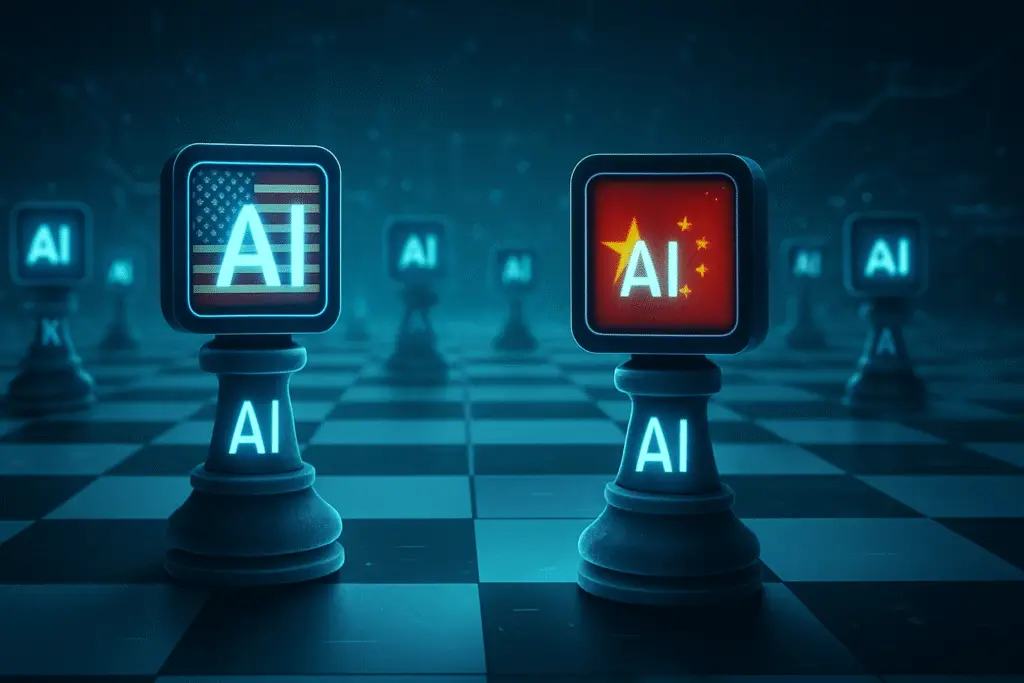
Genesis of the Race: How We Got Here
The modern AI arms race gained significant momentum in the mid-2010s, fueled by exponential increases in computing power, the availability of vast datasets, and breakthroughs in machine learning, particularly deep learning. While AI research has a long history in both the U.S. and China, a pivotal moment for China arrived in 2017 with its “Next Generation Artificial Intelligence Development Plan.” This ambitious national strategy explicitly aimed for global AI leadership by 2030, transforming AI from a scientific pursuit into a national imperative. This declaration served as a wake-up call for the United States, which, while leading in fundamental research, had largely left AI development to the private sector. The realization that AI was a critical component of national security and economic competitiveness rapidly shifted the global dynamic, igniting a race for supremacy that continues to accelerate. The race began not with a single event, but a growing awareness of AI’s transformative power.
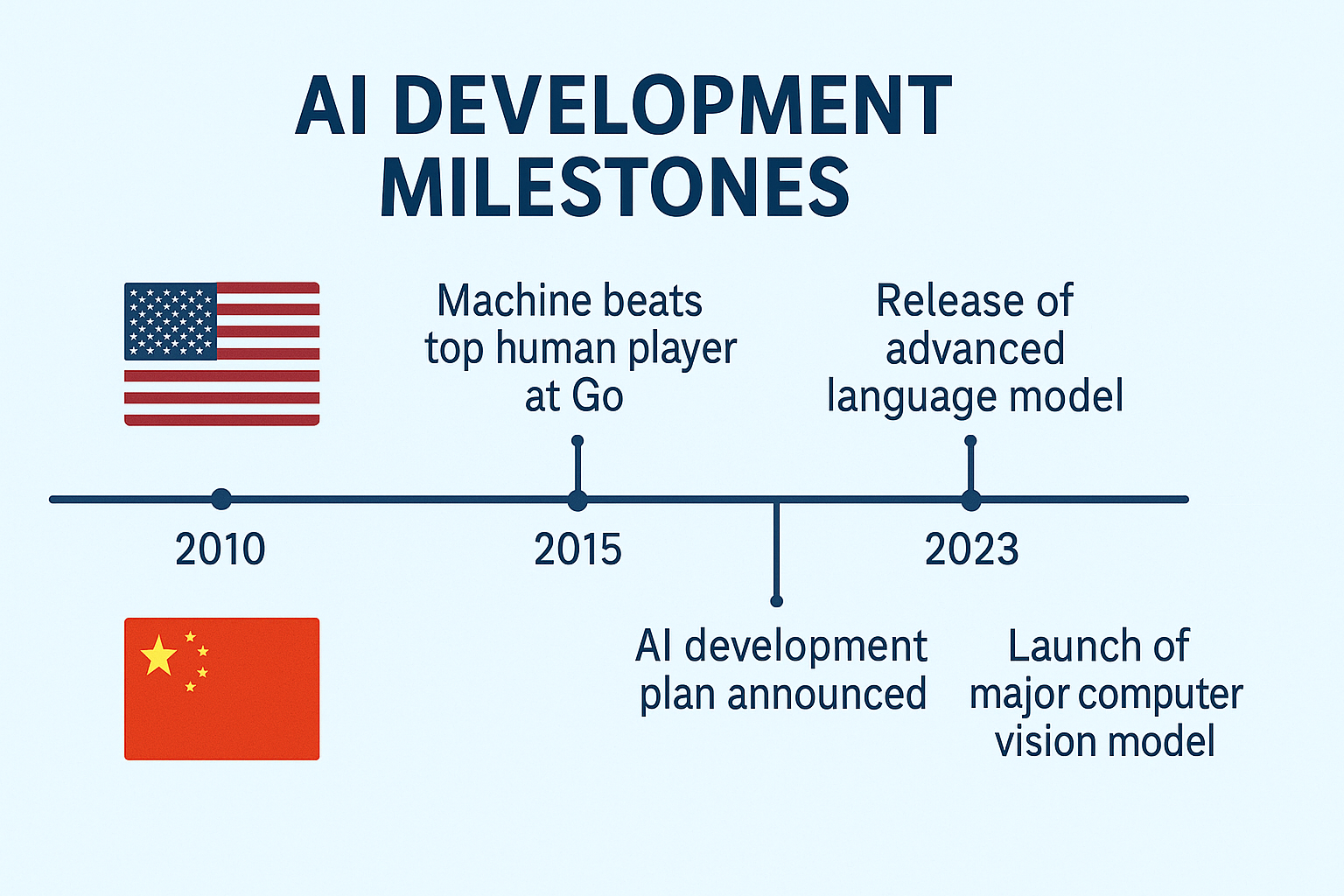
The Contenders: Strengths and Strategies
Team USA: Silicon Valley & Government Initiatives
The U.S. approach to AI is characterized by a powerful synergy between its vibrant private sector and increasingly focused government initiatives. Silicon Valley, home to tech giants like Google, Microsoft, and Nvidia, drives cutting-edge research, attracts top global talent, and benefits from vast venture capital. This decentralized model fosters breakthroughs but faces challenges in ethics and talent retention. Government efforts, through agencies like DARPA and the National Science Foundation (NSF), aim to maintain a technological edge for national security and economic competitiveness. Many ask, “Why is the USA best for AI?” The answer often lies in this unique blend of academic freedom, private enterprise, and strategic public funding that cultivates fertile ground for AI breakthroughs.
Team China: State-Driven Ambition & Rapid Implementation
China’s AI ascent is largely state-driven, with a national strategy targeting AI dominance by 2030. Massive state funding and preferential policies integrate AI across its economy, from smart cities to manufacturing. Chinese tech giants like Baidu, Alibaba, and Tencent benefit from government support and a vast domestic market. China’s significant strength is its access to immense datasets, enabling rapid AI model training. It excels in rapid adoption and deployment. Challenges include historical dependence on foreign semiconductors (though this is changing) and international scrutiny over ethical implications, particularly in surveillance. The question “Will China dominate AI?” is debated, weighing its unified strategy and data advantage against these hurdles and concerns about research freedom.
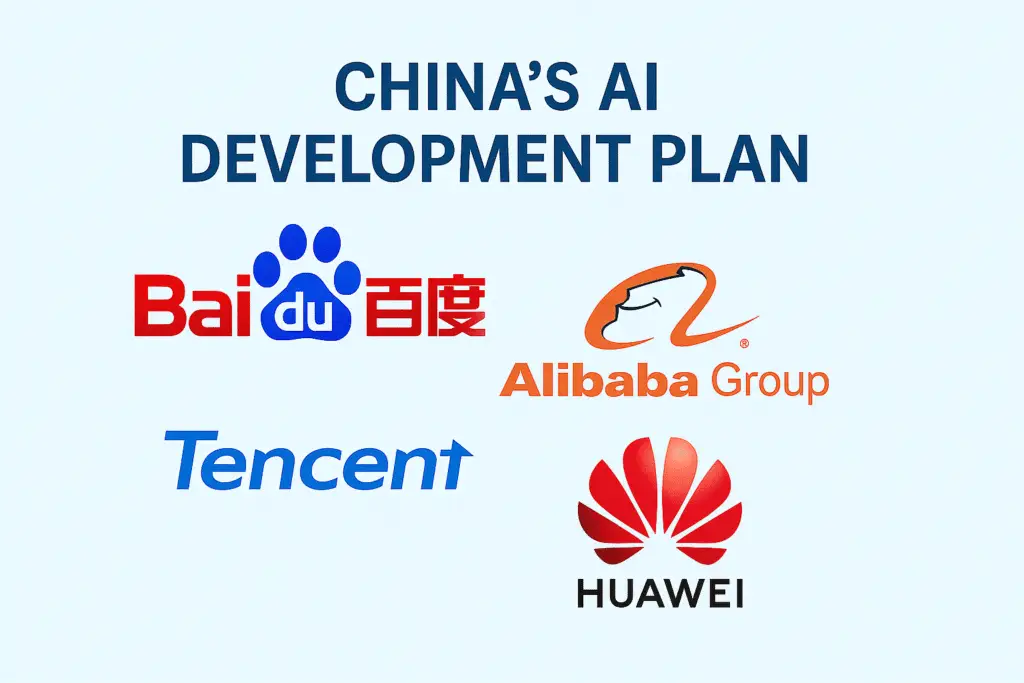
Battlegrounds: Key Areas of AI Competition
The AI arms race unfolds across several critical battlegrounds. The AI Talent race sees both nations fiercely competing for top researchers and engineers. Semiconductors & Hardware are vital, as advanced chips power AI, making their design and manufacturing a strategic imperative in the U.S.-China tech war. Data Dominance is crucial for training robust AI models, raising ethical and privacy concerns, especially regarding China’s extensive data collection. Competition extends to various AI Applications, including autonomous vehicles, facial recognition, healthcare AI, fintech, and controversially, Military AI (Lethal Autonomous Weapons Systems – LAWS). Finally, the battle to establish global Standards and Ethics for AI development and deployment is subtly but profoundly shaping the future, influencing how these powerful technologies are governed and utilized worldwide.
Current State: Who’s “Winning” in 2025?
As of mid-2025, determining “Which country is no 1 in AI?” or “Is China or the USA ahead in AI?” is complex. The United States generally leads in fundamental AI research, academic publications, and foundational model creation, attracting top talent. This often leads to the perception that “The US is number 1 in AI” in terms of pure innovation. However, China demonstrates superior speed and scale in AI application and widespread deployment, particularly in real-world scenarios and public services. Its rapid integration of AI into smart cities and industries is notable. Therefore, the answer to “Who is leading the AI race in the world?” is nuanced: it’s a neck-and-neck competition, with the U.S. excelling in innovation and China in application. Other players like the EU and India contribute, often focusing on ethical AI, but are not direct contenders for global supremacy.
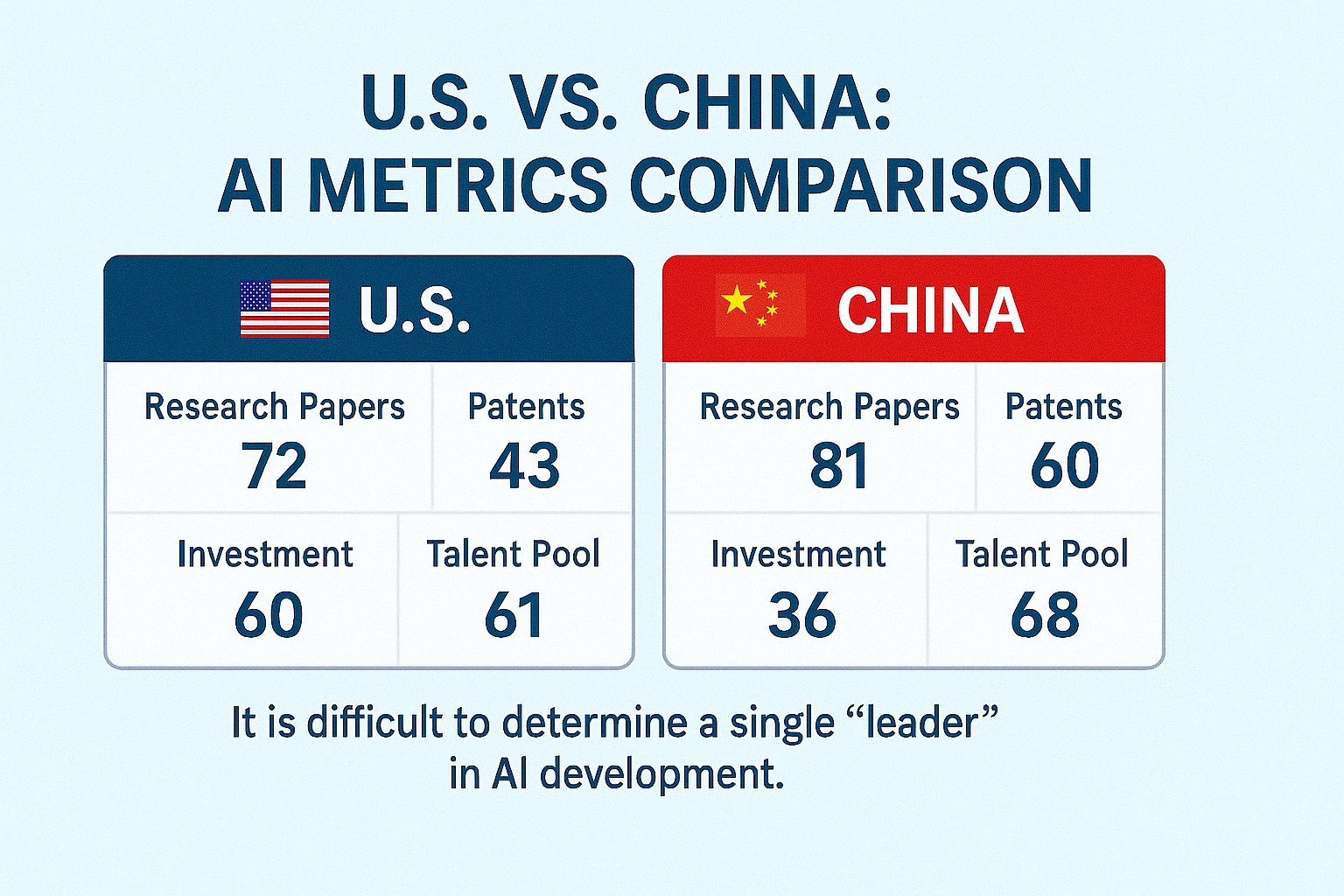
Geopolitics of AI: More Than Just Tech
The AI arms race is fundamentally reshaping international relations, influencing trade, supply chains, and military doctrines. AI dominance promises immense economic benefits, potentially shifting global power balances. Nations leading in AI are poised for advantages in productivity and innovation. From a national security perspective, AI is indispensable for modern warfare, intelligence, and cybersecurity. The development of AI-powered autonomous weapons and advanced surveillance transforms military strategies. The concern is an “AI Cold War,” marked by technological decoupling and increased mistrust. The question of “What happens if China wins the AI race?” is significant, implying a potential shift in global power and the dominance of Chinese technological standards. Conversely, a U.S. lead could solidify its global position. The outcome will define the geopolitical landscape for decades.
Silicon Valley: Ally, Competitor, or Both?
Silicon Valley’s role in the U.S. AI strategy is complex. While the U.S. government relies on its innovation, tech companies, driven by global markets, sometimes clash with national security demands for technology transfer restrictions. Ethical dilemmas arise concerning military AI and data privacy. Companies like Google and Microsoft operate globally, which can conflict with national interests. The U.S. government seeks to leverage the private sector’s agility while regulating powerful entities without stifling innovation. This dynamic interplay between private enterprise and public policy will continue to shape the U.S. trajectory in the AI arms race, balancing open innovation with strategic national goals.
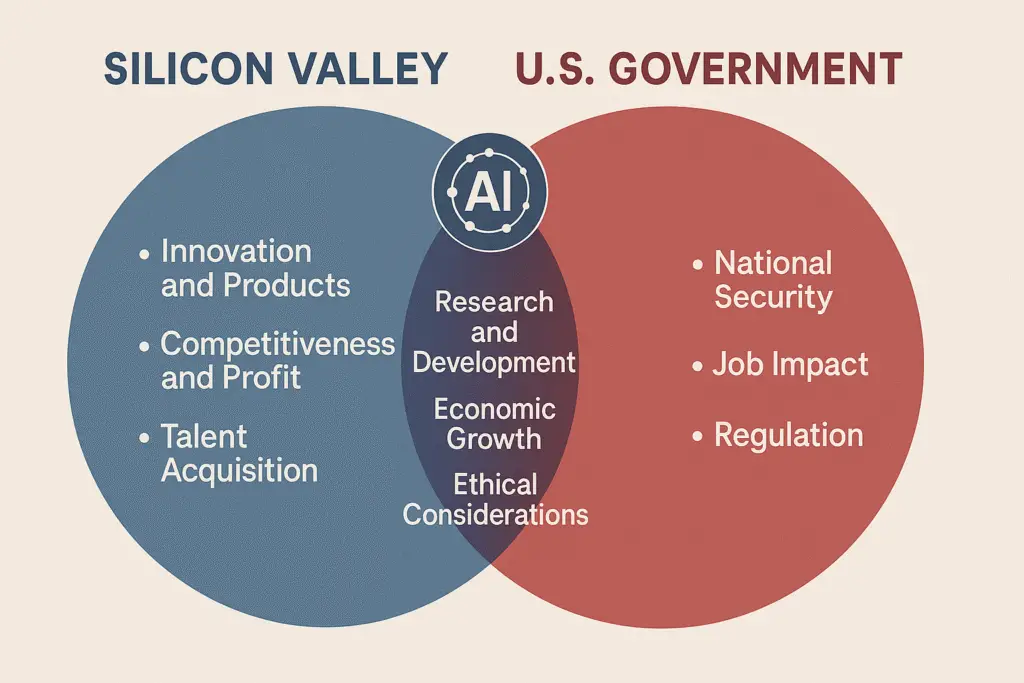
Future of the Race: Predictions & Scenarios (2030+)
Looking ahead, the AI arms race presents several scenarios. Continued intense competition could lead to a bipolar AI world, fragmenting the digital landscape. An optimistic view envisions collaboration on global challenges like climate change, though this requires significant geopolitical shifts. The questions “Will China be the AI superpower?” or “What year will China lead the world in AI?” are debated, depending on sustained investment and policy agility. “AI nationalism” risks global cooperation, while “AI globalism” emphasizes shared ethical frameworks. Ethical considerations like job displacement, algorithmic bias, and autonomous weapons highlight the urgent need for robust global governance to ensure responsible AI development and prevent misuse.

Conclusion: Navigating the AI Frontier Responsibly
The AI arms race is a defining narrative of our time, a complex, high-stakes competition with no clear winner. Both the U.S. and China bring unique strengths and face distinct challenges. This rivalry impacts global economics, national security, and international relations. While competition drives innovation, the true test lies in responsible navigation. This requires not only continued R&D but also global efforts to establish shared ethical standards, foster cooperation, and ensure AI benefits all, rather than becoming a tool for division. The future of AI, and our world, depends on how we engage in this unprecedented race, prioritizing human values and global well-being.
Maybe you also like:
Follow me on:
For more updates, visit: flashpointnews.com.br


